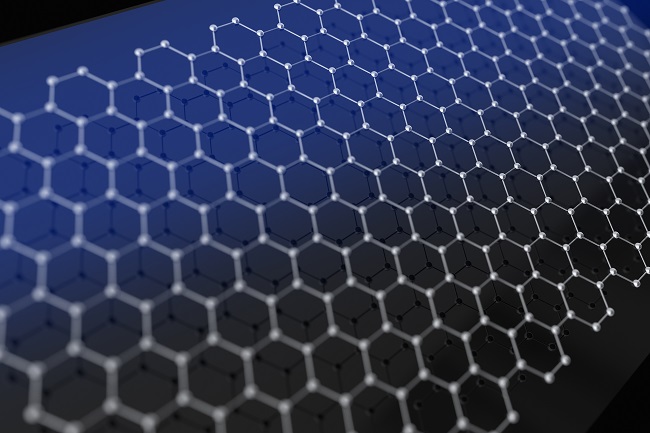Localized conductive regions, that measure as small as 4 nm across, have been patterned into graphene oxide. The environmentally friendly method uses no harmful solvents and occurs at a low temperature.

welcomia | shutterstock
To achieve this the tip of an atomic force microscope was used to initiate local chemical reactions on the graphene oxide sheet. This allowed electrically conductive features that measured as small as 4 nm to be patterned onto single sheets.
Our approach makes it possible to draw nanoscale electrically conductive features in atomically thin insulating sheets with the highest spatial control reported so far. Unlike standard methods for manipulating the properties of graphene oxide, our process can be implemented under ambient conditions and is environmentally benign, making it a promising step towards the practical integration of graphene oxide into future technologies.
Prof. Jeffrery Mativetsky - Binghampton University
Graphene is hailed as a 'wonder material' made of an atomically thin, 2D carbon lattice. Graphene possesses outstanding thermal, electrical and mechanical properties. Graphene oxide is a 2D derivitive of graphene that possesses different properties when compared to graphene. Whilst it has a significantly lower conductivity than graphene it is highly tunable and can be easilly produced and processed. With the removal of some oxygen atoms from the surface of graphene oxide the material stops behaving as an insulator and becomes conductive. This allows graphene oxide to be used in applications such as solar cells, sensors, electronics and biomedical devices.
The Binghamton research offers a new perspective on the spatial resolution mechanisms, and their limits, and displayed an innovative method to create loacalised conductive regions. The researchers managed to create the smallest achievable conductive region, which was as small as 4 nm. This feat has not been achieved by any other methods so far.
Mativetsky feels that the method they adopted holds promise for the prototyping of nanoscale conductive patterns in graphene oxide on a larger scale.
There is significant interest in defining regions with different functionalities, and writing circuitry into two-dimensional materials. Our approach provides a way to directly pattern electrically-conductive and insulating regions into graphene oxide with high spatial resolution.
Prof. Jeffrery Mativetsky - Binghampton University
The Binghamton research allows a greater understanding graphene oxide’s physical properties on the nanoscale as well as paving the way for novel approaches to integrate graphene oxide into forthcoming technologies.
Mativetsky’s method does not utilize an inert gas atmospheres, high temperatures or harmful chemicals. As a result it is seen as an environmentally friendly approach of processing graphene oxide.
At first, this will mainly be useful for studying fundamental properties and lab-scale devices," said Mativetsky. "Eventually, this work may help lead to the practical integration of graphene oxide into low-cost and flexible electronics, solar cells, and sensors.
Prof. Jeffrery Mativetsky - Binghampton University
Initially, the paper titled "Nanoscale Reduction of Graphene Oxide under Ambient Conditions" was published online in the international journal Carbon on September 8th. The paper will be published in print in December.
The National Science Foundation recently awarded Mativetsky a three-year grant to further pursue his method to customize graphene oxide’s structure and properties.